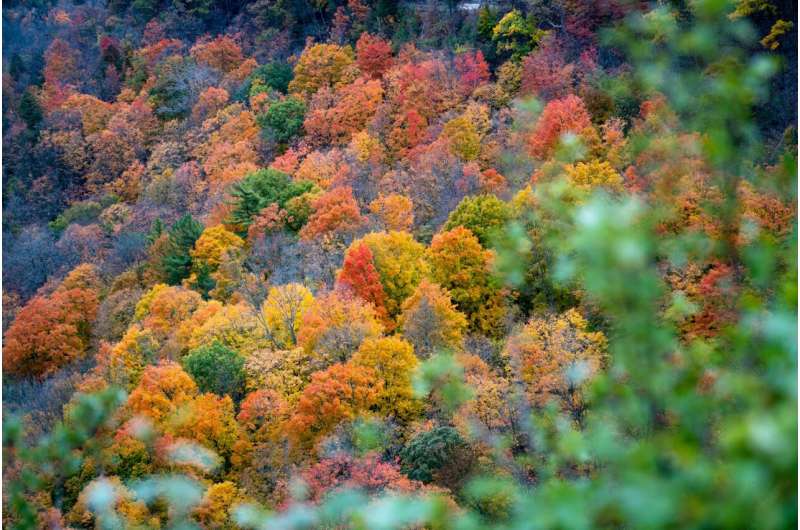A groundbreaking study reveals that forests with greater tree species diversity are more efficient at sequestering planet-warming carbon dioxide. The research maps the life expectancies of over 3.2 million trees across the Americas, showcasing the intricate relationship between tree growth, lifespan, and carbon storage. Discover how forest ecology and biodiversity can play a crucial role in mitigating climate change.

The Delicate Balance of Tree Diversity
The study, published in the prestigious journal Science, unveils a fascinating insight: the trade-offs between tree growth and lifespan are crucial for the planet’s carbon balance. Researchers found that fast-growing tree species, while capturing carbon more quickly, tend to have shorter lifespans and lower maximum sizes. In contrast, slower-growing trees live longer and grow larger, effectively storing more atmospheric carbon, especially in diverse forest settings.
By analyzing data from 1,127 tree species across the Americas, the international team of experts identified four distinct life-cycle patterns. This includes fast-growing species with shorter lifespans and small maximum sizes, as well as three clusters of slow-growing species with varying life expectancies and maximum sizes. The findings suggest that maintaining a diverse array of tree species is essential for maximizing carbon sequestration and promoting ecosystem health.
Harnessing the Power of Biodiversity
The take-home message from the study is clear: diverse forests are more productive and capture carbon more efficiently. Co-author Dr. Adriane Esquivel-Muelbert, a Brazilian researcher with the University of Birmingham, said: “The positive relationship between trait diversity and productivity indicates that maintaining their forest diversity is important for ecosystem health and mitigating climate change.”
Choosing carefully the species to be planted, restoration and conservation efforts can store large quantities of carbon while increasing forest resistance to climate change. Whereas non-tropical areas were more likely to be dominated by slower-growing species, and tropical regions — which are biodiversity hotspots — had as much of the breadth of those four demographic functional types as any other location.
Unlocking the Secrets of Tree Life Cycles
Their expansive dataset — which included observations from trees ranging from northern Canada to southern Brazil — enabled them to produce life expectancy “maps” for the wide array of tree species, some with life expectancies as swift as 1.3 years and others that can push 3,195 years. According to lead author Dr. Lalasia Murphy from ETH Zurich: “Analysis on this large scale is only possible because it involves the combined effort of hundreds of researchers who have been observing these forests for many years.”
The research indicates that temperature strongly influences the growth of trees, specifically. A slow growth in colder climates Such knowledge can guide biodiversity conservation and climate change mitigation strategies by emphasizing the need to protect different forest environments and determine which tree species present in these forests have the most potential to increase carbon stocks.
